Tag: workout
Fitness During Disease: How Physical Activity Reduces the Risk of Disease

Physical fitness is a crucial component of one’s long life as it augments the person’s mental capabilities. However, to achieve the physically fit body one needs to go through hard training activities.
Engaging in regular fitness and physical activity offers numerous benefits, including a significant reduction in the risk of various diseases. Exercise plays a pivotal role in promoting overall health and well-being by positively influencing various physiological systems.
Fitness During Illnesses
Even that seems easier to some extent. The most difficult aspect is maintaining it for the whole life. So, whenever a person falls sick he needs to go extra miles to take care of his body to get back to the normal condition. At that instance, one needs to give proper attention to his diet along with the physical fitness. Another important component is recovery.
In today’s world, where people tend to go towards sedentary lifestyle activities, physical exercises have become the necessity, especially for a person suffering from physical disorders such as scoliosis, spinal cord injuries etc. Even doctors advise patients to do aerobic exercises while having such diseases as it provides them many benefits:
- Cardiovascular Diseases: The exercises keep one’s digestive and circulatory system fit which provides them endurance and strength to overcome the everyday battles they are fighting with their own body. It also helps in keeping the heart rate normal.
- Respiratory Problems: Some people have asthma, tonsillitis or other breathing problems. Thus, a morning walk to get the fresh air is essential for such people.
- Diabetes: For a diabetic patient regular walk or any physical activity is a must as it helps in keeping the blood sugar level under control.
How Do Physical Exercises Help While in Illness?
During any kind of illness, people think that the complete bed rest will cure them after a certain period of time but generally, it has been seen that those who include physical activities in their routine heals faster.
The one who is physically unwell also loses his patience and tolerance after some time. Therefore, the aerobic or breathing exercises should be done at that moment as it doesn’t only make the person’s body fit but also provide the mental toughness to deal with the situation.
Even the accident sufferers are suggested to go for physiotherapy sessions. Similarly, for the mental disorders patients, there is no cure other than yoga and meditation. It not only helps the person to achieve physical fitness but the complete well-being i.e. physically, mentally, and socially.
Here’s how fitness contributes to disease reduction:
- Cardiovascular Health: Regular exercise strengthens the heart, improves blood circulation, and helps maintain healthy blood pressure levels. It also supports the expansion and flexibility of blood vessels, reducing the risk of heart disease, heart attacks, and strokes.
- Weight Management: Physical activity helps control body weight by burning calories and increasing metabolic rate. Maintaining a healthy weight lowers the risk of obesity-related conditions such as type 2 diabetes, cardiovascular diseases, and certain cancers.
- Improved Insulin Sensitivity: Regular exercise enhances insulin sensitivity, which is crucial for regulating blood sugar levels. This reduces the risk of developing type 2 diabetes and helps manage the condition for those already diagnosed.
- Stronger Immune System: Exercise boosts the immune system by promoting the circulation of immune cells, enhancing their ability to detect and combat infections. A stronger immune system reduces the risk of infections and chronic diseases.
- Bone Health: Weight-bearing exercises such as weightlifting, walking, and jogging strengthen bones and help prevent conditions like osteoporosis, which can lead to fractures and bone loss.
- Mental Health Benefits: Physical activity has a positive impact on mental health by reducing stress, anxiety, and depression. Managing these factors indirectly contributes to a lower risk of stress-related diseases and mental health disorders.
- Hormone Regulation: Regular exercise helps regulate hormones, including those responsible for appetite control, stress response, and metabolism. Balanced hormone levels promote overall health and prevent hormonal imbalances that can lead to diseases.
- Digestive Health: Physical activity can aid digestion by promoting healthy gastrointestinal movement and reducing the risk of constipation and digestive disorders.
- Circulation and Oxygen Delivery: Exercise improves blood circulation and oxygen delivery to cells throughout the body. This supports optimal organ function and reduces the risk of various diseases related to poor circulation.
- Reduced Inflammation: Chronic inflammation is linked to numerous diseases, including heart disease, diabetes, and certain cancers. Regular exercise has an anti-inflammatory effect, reducing the overall inflammatory burden on the body.
- Improved Lung Function: Aerobic exercises enhance lung capacity and function, which is crucial for maintaining respiratory health and reducing the risk of lung diseases.
- Cancer Risk Reduction: Regular physical activity has been associated with a reduced risk of certain types of cancer, including breast, colon, and lung cancers. The exact mechanisms are still being studied, but exercise is believed to influence factors like hormone regulation and immune function.
By engaging in consistent fitness activities, individuals can significantly decrease their risk of developing a wide range of diseases. Incorporating a variety of exercises, such as cardiovascular workouts, strength training, flexibility exercises, and relaxation techniques, can provide comprehensive health benefits.
Precautions To Be Taken Before Performing Any Physical Activities
The type of exercise one should go for should always be decided on the basis of his body impairments. Just like the medicines are different for each kind of ailment, similar is the case with the exercises. One should always consult the physician before going for any physical exercise or training at the time of illness otherwise it might affect them badly.
The exercises done in a wrong way can rupture the muscles and nerves which might prove dangerous in the long run. Hence, while doing the exercises, the safety measures should always be checked first. Like, if a person has asthma and uses an inhaler, so he should carry it while on field or training centers also.
Is exercise good during illness?
Engaging in exercise during illness is a nuanced decision that depends on the severity of the illness, the symptoms you’re experiencing, and your overall health status. In general, mild to moderate exercise can be beneficial for some individuals during certain illnesses, but there are situations where exercise should be avoided. Here’s a guideline to help you determine whether exercise is appropriate for you during illness:
When Exercise May Be Beneficial
- Mild Symptoms: If you have a mild cold, low-grade fever, or minor symptoms, light exercise such as walking, gentle stretching, or yoga might be beneficial. Exercise can help improve blood circulation, boost your mood, and alleviate some symptoms.
- Maintaining Routine: If you’re accustomed to regular exercise and are feeling well enough, engaging in light to moderate exercise might help you maintain your routine and prevent detraining.
- Low-Intensity Activities: Low-intensity exercises like walking or stationary cycling can promote gentle movement without putting excessive strain on your body.
- Stress Relief: Exercise can have stress-relieving effects and release endorphins, which might help you feel better mentally.
When Exercise Should Be Avoided
- Fever: If you have a fever, it’s generally recommended to avoid exercise until your body temperature returns to normal. Exercising with a fever can raise your body temperature further and potentially worsen your condition.
- Severe Symptoms: If you’re experiencing severe symptoms such as extreme fatigue, body aches, difficulty breathing, or dizziness, it’s important to prioritize rest and recovery. Intense exercise can exacerbate these symptoms and delay your healing process.
- Contagious Illness: If your illness is contagious, such as the flu or a viral infection, it’s best to avoid public spaces like gyms to prevent spreading the illness to others.
- Injury Risk: When you’re not feeling your best, your coordination and balance might be compromised, increasing the risk of injury during exercise.
- Medical Conditions: If you have chronic medical conditions or are taking medications, it’s advisable to consult your healthcare provider before exercising during illness.
Key Considerations
- Listen to Your Body: Pay attention to how your body feels. If exercise makes you feel worse or significantly fatigued, it’s a sign to rest.
- Hydration and Nutrition: Stay hydrated and consume nutritious foods to support your immune system and recovery.
- Modify Intensity: If you decide to exercise, reduce the intensity and duration. Focus on gentle movement rather than intense workouts.
- Rest and Recovery: Adequate rest is crucial for recovery. If you’re unsure, prioritize rest until your symptoms improve.
- Consult a Healthcare Professional: If you’re unsure about exercising during illness, or if you have underlying health conditions, it’s advisable to consult a healthcare provider for personalized guidance.
Ultimately, the decision to exercise during illness should be based on your individual circumstances. It’s important to prioritize your health and well-being, and sometimes that means giving your body the time it needs to heal without adding the stress of exercise.
Does Fitness Help Improve Your Immune System?
Yes, fitness and regular physical activity can have a positive impact on the immune system. Engaging in moderate exercise is generally considered beneficial for immune function, helping to strengthen the body’s defense mechanisms and reduce the risk of infections. However, it’s important to strike a balance, as excessive exercise can have the opposite effect and temporarily suppress immune function. Here’s how fitness supports the immune system:
- Enhanced Immune Surveillance: Regular exercise promotes the circulation of immune cells throughout the body, allowing them to detect and respond to potential threats more effectively.
- Improved Blood Circulation: Exercise increases blood flow, which helps immune cells move freely and reach infection sites more efficiently.
- Stress Reduction: Physical activity triggers the release of endorphins, which can reduce stress hormones like cortisol. Lowering chronic stress levels supports immune system function, as prolonged stress can weaken immunity.
- Enhanced Lymphatic System Function: The lymphatic system, which plays a vital role in immune function, benefits from movement. Exercise helps lymph fluid circulate, aiding the removal of toxins and waste products.
- Anti-Inflammatory Effects: Regular physical activity can have anti-inflammatory effects on the body, reducing the chronic inflammation that can weaken the immune system over time.
- Antioxidant Support: Exercise stimulates the production of antioxidants, which protect cells from damage caused by free radicals. This protection supports immune cells in maintaining optimal function.
- Improved Respiratory Health: Aerobic exercise enhances lung capacity and function, which is essential for respiratory health and preventing infections of the respiratory tract.
- Healthy Weight Management: Maintaining a healthy weight through regular exercise is linked to better immune function. Obesity can lead to chronic low-grade inflammation, which negatively affects immunity.
- Sleep Quality: Regular physical activity is associated with improved sleep quality. Quality sleep is essential for immune system recovery and optimal function.
- Hormone Regulation: Exercise helps regulate hormones, including those that play a role in immune function. Balanced hormone levels support immune responses.
- Gut Microbiome: Exercise can positively influence the gut microbiome, which plays a significant role in immune system health and overall well-being.
Important Points to Consider
- Moderation: Engaging in moderate exercise is generally beneficial for immune health. Intense, prolonged exercise might temporarily suppress the immune system, especially if not balanced with appropriate recovery.
- Rest and Recovery: Adequate rest between workouts is crucial to prevent overexertion and ensure the immune system can operate optimally.
- Individual Variation: Each person’s immune response to exercise is unique. Factors like age, fitness level, and overall health contribute to the impact of exercise on immunity.
- Hydration and Nutrition: Staying hydrated and consuming a balanced diet rich in vitamins, minerals, and antioxidants further supports immune function.
- Consultation: If you have pre-existing health conditions, it’s a good idea to consult your healthcare provider before beginning a new exercise regimen to ensure it’s appropriate for your situation.
Overall, maintaining a regular fitness routine that includes a combination of cardiovascular exercises, strength training, flexibility activities, and rest days can contribute to a strong and resilient immune system.
Fitness At Home: 7 Tips for a Healthy Lifestyle!
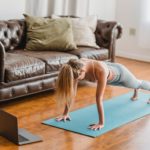
It is being quite common to hear people complaining about not having enough time to maintain their fitness. But did you know that fitness is important for your appearance? According to the doctors, everyone should at least workout for 45 minutes in a day to stay fit.
However, most of the people avoid going to the gym or other fitness centers due to excessive work or because of expensive membership. According to several surveys, people spend most of the day without proper amount of movements. There is hardly time left for one to even think of working out or physical activities.
The problem is that it is quite hard to find any time for fitness in one’s schedule. This is where they can choose fitness at home!
Fitness at Home
We all want to be healthy and live long, happy lives. And we all know that being physically active is one of the best ways to improve our health and keep our bodies strong and healthy. But it’s not always easy to find the time and motivation to get to the gym. That’s where fitness at home comes in.
Fitness is a key part of living a healthy lifestyle. It can help us feel better, improve our health, and aid in weight management.
One of the best ways to be sure we’re getting enough exercise is to invest in a home gym. Home gyms offer a wide variety of equipment. This is a great way to ensure we can stay on track no matter the weather or our schedules.
However, you don’t have to purchase a home gym to get in shape – in fact, you don’t even need specialized equipment. Fitness at home is all about finding ways to be active without leaving the house. Whether you’re looking for a full workout or just a way to get moving, there are tons of ways to get fit without leaving the comfort of your home.
Fitness at home has exploded in popularity in the past few years. It’s completely changed the way we think about our health, and it has opened up a world of possibilities when it comes to our workout routines. What do you want to do? Are you looking for building muscle mass? Do you want to lose weight? Is your goal healthy aging? Working out at home is the best way to achieve your fitness goals.
Fitness Program at Home
If you’re looking to get in shape, but don’t have the time or money to hit the gym, fitness programs at home are the perfect solution. You can choose from a variety of programs to suit your needs and fitness level, including cardio, strength training, and flexibility exercises. No equipment required, so you can work out from the comfort of your own home. And with the flexibility of doing it whenever and wherever you want, it’s easier than ever to find the time to work out.
As the name suggests, programs for fitness at home are designed to help you get fit, without having to leave the comfort and safety of your own home.
They come in a variety of formats and can be delivered in a number of different ways, from DVD workouts to digital apps, which can be accessed on your smartphone or tablet. Some programs are designed to help you lose weight and become fitter, while others focus on building strength, or improving your athletic performance.
What are the Advantages of Fitness at Home?
The convenience and flexibility of working out from the comfort of your own home offer a host of advantages that cater to busy schedules and personal preferences. Whether you’re a fitness enthusiast or a beginner, here are the compelling benefits of integrating fitness routines into your home environment:
- Convenience and Time Efficiency: Home workouts eliminate the need for commuting to a gym, saving you valuable time. You can seamlessly fit in a workout without worrying about travel or operating hours, making it easier to maintain consistency.
- Flexibility in Scheduling: With home fitness, you have the freedom to exercise whenever it suits you best. Whether it’s early morning, during lunch breaks, or late at night, you’re in control of your workout schedule.
- Privacy and Comfort: Exercising at home offers a private and comfortable setting where you can focus entirely on your workout without concerns about judgment or distractions. This is particularly advantageous for those who may feel self-conscious in public spaces.
- No Equipment Constraints: While gym equipment is beneficial, effective workouts can also be achieved using bodyweight exercises, resistance bands, and other minimal equipment. This flexibility allows you to tailor your workouts to your space and budget.
- Personalized Workouts: Home fitness enables you to curate workouts that align with your goals and preferences. You can choose exercises that target specific areas of your body and modify routines as needed.
- Family and Community Involvement: Exercising at home provides an opportunity for family members or roommates to join in. Group workouts can be motivating and fun, creating a shared commitment to fitness within your household.
- Reduced Costs: Gym memberships and commute expenses can add up. Home fitness eliminates these costs, allowing you to invest in quality equipment or online fitness resources that cater to your needs.
- Avoiding Weather Constraints: Inclement weather can hinder outdoor or gym workouts. By exercising at home, you’re not reliant on weather conditions and can maintain consistency regardless of the elements.
- Personal Growth and Autonomy: Setting and achieving fitness goals at home fosters a sense of accomplishment and personal growth. You’re responsible for your progress, enhancing your self-discipline and accountability.
- Minimized Distractions: Home workouts are free from the potential distractions found in crowded gyms. This focused environment can lead to more effective and efficient workouts.
- Customizable Environment: You have control over the ambiance of your workout space, from lighting and music to temperature. Creating a comfortable and motivating environment enhances your overall fitness experience.
- Adaptable to Fitness Levels: Whether you’re a beginner or an experienced athlete, home fitness can be tailored to your fitness level. You can start at your own pace and gradually increase intensity as you progress.
Embracing fitness at home empowers you to prioritize your well-being while fitting seamlessly into your lifestyle. With flexibility, convenience, and personalization at the forefront, you’ll discover that your home can be the ideal gym that supports your journey toward a healthier and more active life.
7 Tips for Fitness at Home
Those who are not willing to spend on fitness programs outside can choose programs for fitness at home by following certain tips that include:
1. Make A Routine
Before proceeding ahead with exercise make a routine. Determine the right time when you are completely free and invest yourself totally in exercise. After creating your routine follow it sincerely if you want to stay fit.
According to doctors, morning is considered as the best time to do weight loss exercises. Therefore, it is recommended to do some mind soothing activities such as yoga or meditation to refresh the brain and to remain fit.
2. Warm Up
Always do warm up before the exercise as it increases the blood flow to the body and reduces the chance of injury. For a warm-up, one can try cycling in the nearby area or do a little walk on the terrace. For the best warm-up, wear comfortable running shoes, loose clothes and do it on the road or in the neighborhood. If you are in an outdoor track, always walk for a minute or two first.
3. Do Some Stretching
Stretching is a great exercise that reduces the fat and helps you stay fit. You can lift your knees or kick it straight toward your face. You can also swing your arms up over your shoulders for at least 30 seconds before starting the exercise. This is another type of exercises that is easy to do and doesn’t require the purchase of a special machine.
4. Include Cardiovascular
If you want to stay healthy without spending a penny, then you should try cardio exercises as it will help you stay healthy at home. Cardio exercises are quite effective in reducing the weight and sculpting the muscles. You can experiment dancing, jogging or running as it will prove great exercises for keeping you fit.
5. Rope Jumping
Rope jumping is also a good exercise that helps in the reduction of belly fat. This exercise can be done at home and it does not require any training. Performing it for at least 15 minutes on daily basis will prove immensely benevolent for your health.
6. Doing Resistance Exercise
If you are looking to develop muscles without hitting in the gym, then you should do strength increasing exercises for 20-30 minutes a day. There are several exercises that you can try at home without the requirement of expensive gym equipment. Some of them are listed below:-
- For chest and upper body, you can try pushups and dumbbell press and other exercises with dumbbells.
- For abdominals or six-pack abs, you can do sit-ups or plank. Performing abdominal exercises for 20 minutes a day will help you to lose weight and stay fit.
- For the lower part of your body such as legs, you can do squats.
7. Do Household Chores
If you have no time for exercises then don’t worry as there are many household chores by which one can stay fit at home. To burn body fat, one can try daily chores such as mopping, cleaning, scrubbing the tub or vacuuming etc.
Summary: Time and Motivation for Fitness at Home
It’s tough to find the time and motivation to work out when you have a busy schedule. But working out at home is a great solution for those who don’t have the time or money to go to the gym. You can create your own fitness program at home, tailored to your needs and fitness level. You can also work out with friends and family to keep each other motivated.
Top 5 Reasons You Should Train Your Glutes to Be Stronger
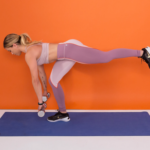
The shape of your buttock is usually linked with beauty standards. Most people even call it Kardashian booty, but they forget how important it is to train your glutes. Within your back muscles, you will have to work on the Maximus, Medius, and Minimus.
All these three muscles collectively make glutes. These muscles are one of the largest and strongest muscles within your whole body. That is where you hold weight and where you balance your body. If your glutes muscles are uneven or not very well-trained, you will see the impact in your posture.
You will not be able to stand properly and this will also have an impact on your exercise routine and your body balance.
When you walk or stand, it is not just your leg muscles at work. It is also your glutes that are mainly connected to the hamstring. Even when you move your leg, extend it or rotate it, you will see the impact on your whole body. There are so many benefits of having stronger glute muscles, it helps you reduce the chance of injury, improve your body posture, and a lot more.
With the help of this article, we will mainly highlight why you need to work on your glutes and how this will eventually impact your body in real life. We will also talk about the benefits that are linked with stronger glutes.
Are Glutes a Hard Muscle to Build?
Building glutes, also known as the muscles of the buttocks, can vary in difficulty from person to person based on genetics, training approach, and individual factors. Glutes are composed of three main muscles: the gluteus maximus, gluteus medius, and gluteus minimus. While some individuals may find it relatively easier to develop glutes, others might face more challenges. Here are some factors to consider:
- Genetic Predisposition: Genetics play a significant role in determining the shape and size of your glutes. Some people naturally have a higher potential for larger and more defined glutes due to their genetic makeup.
- Muscle Activation and Recruitment: For some individuals, effectively activating and engaging the glute muscles during exercises can be challenging. Proper technique and focused mind-muscle connection are important for optimal glute development.
- Training Consistency: Consistency in training is crucial for muscle growth. Building glutes requires regular strength training exercises that target the glute muscles, such as squats, deadlifts, lunges, hip thrusts, and glute bridges.
- Progressive Overload: Progressive overload involves gradually increasing the resistance, weight, or intensity of exercises over time. This principle is essential for muscle growth. If you’re not challenging your glutes with increasing resistance, growth may be slower.
- Nutrition and Recovery: Nutrition and recovery play a significant role in muscle development. Adequate protein intake, proper hydration, and sufficient rest are important for optimal muscle growth and recovery.
- Individual Variation: Everyone’s body responds differently to training stimuli. Some individuals might see rapid glute development with the right training approach, while others might experience slower progress.
- Gender Differences: In general, females tend to store more subcutaneous fat around the glutes due to hormonal differences. While this can contribute to a curvier appearance, it doesn’t necessarily mean building muscle is more challenging.
- Training Program: A well-structured training program that includes a variety of glute-targeted exercises and different rep ranges can optimize glute development. Compound movements like squats and deadlifts, along with isolation exercises, can help achieve well-rounded results.
- Patience and Persistence: Building glutes takes time and consistent effort. It’s important to stay patient and persistent, as muscle growth doesn’t happen overnight.
While glute development can be challenging for some individuals, with the right approach, dedication, and focus on proper technique, most people can achieve noticeable improvements in their glute muscles.
Reasons You Should Train Your Glutes to Be Stronger
Enhances Beauty
We all know that tight, round bottoms are linked with beauty, thanks to the Kardashian family. As slim-fit jeans are in fashion, everyone wants to keep their curves on display. Apart from the beauty they also help you to look good in your dress especially if you like to wear slim fit dresses.
This is a myth that only women need to have round booty, men are also appreciated when they have a well-balanced body structure. Most men only focus on upper body strength, so this makes them look out of proportion.
With better glute shape, your body will be in proportion, and you will not lose the shape of your body.
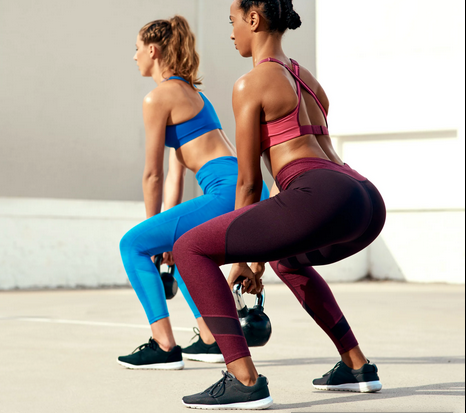
Improves Posture
One of the main issues behind muscles strain, chronic pains, and a bad picture is bad body posture. We have seen that people with bad posture look very bad in pictures. This is the reason models and fashion gurus have very good body posture.
Apart from this, bad body posture impacts confidence and looks as well. People who sit cross leg or have jobs that require them to sit at a fixed place for long hours end up with severe posture issues. With the help of glutes strengthening exercises, they will be able to improve their body posture and look much more confident.
Reduce Chance of Injury
Glutes are the place where your upper body and lower body find their balance. In case you do not have a good balance, this will affect your back, and eventually, it will cause injury.
People with joint pain especially, if there is a knee pain or spine issue it can be linked with the glutes muscles. If you work on strengthening your glutes muscle, you will eventually see improvement in your joint pain as well.
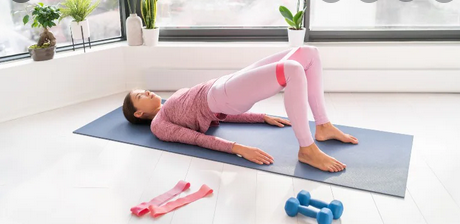
Improves Athletic Performance
If you are an athlete, or you are interested in combat games, glutes strength will play a major role. Apart from this if you are a marathon runner, a footballer, or a cricket, glute exercises will help you improve your body balance and stability.
Treat Back Pain
Back pain is getting very common. Previously, back pain was only linked with old age, but now we can see that young people are also complaining about back pain. This is mainly because tech-based jobs require you to sit for long hours in the same position.
To reduce the chance of back pain, it is important to work on the strength of your glutes muscles. Eventually, your posture will become better and your body will gain back the lost flexibility, and you will get rid of the back pain.
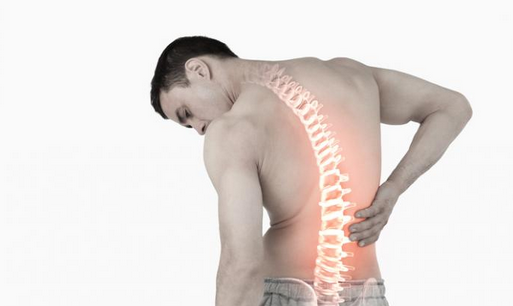
Bottom Line
To sum it all up, people usually link glutes with beauty only, but they forget it has so many other benefits as well. From maintaining good body balance to helping you improve your posture, there are different reasons you should train your glutes. You will see an impact in your daily life. Most of the athletes train their glutes for better performance because almost every game needs you to train your glutes.
All the workouts that help with glutes training are equally important for the body’s function.
Even if you walk, stand, or sit somewhere, your glutes are continuously at work. In case you feel any pain or your exercise is not bringing desired results, contact your doctor. Your posture is very critical for the exercise, which is the reason you need to be very careful while performing glutes strengthening exercises. In the case of bad posture, you will feel strain in your lower back, which indicates that you should contact the doctor right away.
